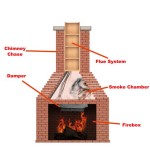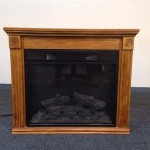Can You Refinish a Fireplace? A Comprehensive Guide
Refinishing a fireplace is a viable option for homeowners seeking to update the aesthetic of their living space without undergoing a complete renovation. The process involves altering the existing surface of the fireplace surround or mantel to achieve a new look. Whether the goal is modernizing outdated brick, adding character to a plain facade, or simply refreshing a worn finish, refinishing offers a cost-effective and less disruptive alternative to replacement.
However, the feasibility and suitability of refinishing depend on several factors, including the type of fireplace material, its current condition, and the desired outcome. Different materials require different techniques and products, and some conditions may necessitate more extensive repairs before refinishing can commence. A thorough assessment of the fireplace is crucial before embarking on any refinishing project.
This article provides an in-depth exploration of the refinishing process, covering different materials, techniques, and considerations to help homeowners determine if refinishing is the right choice for their fireplace. It outlines the steps involved, the potential challenges, and the importance of safety precautions when working with fireplace materials and refinishing products.
Understanding Fireplace Materials and Refinishing Options
Fireplaces are constructed from a variety of materials, each requiring a specific approach to refinishing. Common materials include brick, stone, wood, and concrete. Understanding the composition of the fireplace is the first step in determining the appropriate refinishing method.
Brick Fireplaces: Brick fireplaces are a classic choice, but their appearance can become dated over time. Refinishing options for brick include painting, staining, whitewashing, and applying a German smear technique. Painting brick provides a uniform color, while staining enhances the natural variations in the brick. Whitewashing creates a softened, antique look, and the German smear technique adds texture and character.
Stone Fireplaces: Stone fireplaces offer a rustic and natural aesthetic. Refinishing stone often involves cleaning and sealing to protect the surface and enhance its color. In some cases, staining or painting may be considered, but it is generally recommended to preserve the natural beauty of the stone. For heavily soiled or stained stone, professional cleaning and restoration services may be required.
Wood Fireplaces (Mantels and Surrounds): Wood mantels and surrounds offer a warm and inviting element to the fireplace. Refinishing wood typically involves stripping the old finish, sanding the surface, and applying a new stain, paint, or varnish. The choice of finish depends on the desired look and the overall style of the room. It is essential to use heat-resistant finishes near the firebox to prevent discoloration or damage.
Concrete Fireplaces: Concrete fireplaces are becoming increasingly popular in modern homes. Refinishing concrete can involve applying a new coat of concrete, staining, or painting. Staining allows the natural texture of the concrete to show through, while painting provides a more uniform color. Concrete overlays can also be used to create a new surface texture or pattern.
When selecting a refinishing method, consider the existing style of the home, the desired aesthetic, and the long-term maintenance requirements. It is advisable to test the chosen method on a small, inconspicuous area of the fireplace before applying it to the entire surface.
The Refinishing Process: A Step-by-Step Guide
The refinishing process generally involves several key steps, including preparation, cleaning, repair, application of the finish, and sealing. Each step is crucial for achieving a professional and durable result.
Preparation: The first step is to prepare the work area. Cover surrounding floors and furniture with drop cloths to protect them from dust, paint, or other materials. Remove any decorative items from the mantel and surrounding area. Ensure adequate ventilation in the work space, especially when using solvents or other chemicals.
Cleaning: Thoroughly clean the fireplace surface to remove dirt, dust, soot, and grease. Use a stiff brush and a cleaning solution appropriate for the material. For brick or stone, a mixture of water and trisodium phosphate (TSP) can be effective. For wood, a mild detergent and water solution is usually sufficient. Rinse the surface thoroughly and allow it to dry completely before proceeding.
Repair: Inspect the fireplace for any cracks, chips, or other damage. Repair any imperfections before applying the new finish. For brick or stone, use mortar or patching compound to fill cracks and chips. For wood, use wood filler to repair any dents or gouges. Allow the repair material to dry completely and sand it smooth before proceeding.
Application of the Finish: Select the appropriate finish based on the material and desired aesthetic. For painting brick or concrete, use a masonry primer and a high-quality paint specifically designed for masonry surfaces. For staining brick or stone, use a masonry stain that is compatible with the material. For wood, apply a stain, paint, or varnish according to the manufacturer's instructions. Apply the finish in thin, even coats, allowing each coat to dry completely before applying the next.
Sealing: Sealing the finished surface helps to protect it from moisture, stains, and wear. For brick or stone, use a masonry sealer that is appropriate for the material. For wood, apply a clear coat of varnish or polyurethane to protect the finish. Apply the sealer according to the manufacturer's instructions.
Throughout the process, adhere to safety precautions, including wearing appropriate protective gear such as gloves, masks, and eye protection. Dispose of waste materials properly and follow all local regulations regarding the disposal of hazardous materials.
Key Considerations and Potential Challenges
While refinishing a fireplace can be a rewarding project, it is important to consider several factors and potential challenges before beginning. These considerations can impact the outcome of the project and help to avoid unexpected problems.
Condition of the Fireplace: The existing condition of the fireplace plays a significant role in determining the feasibility of refinishing. If the fireplace is severely damaged or structurally unsound, refinishing may not be a viable option. In such cases, more extensive repairs or even replacement may be necessary. Consult with a qualified professional to assess the condition of the fireplace and determine the best course of action.
Type of Fireplace: The type of fireplace, whether it is wood-burning, gas, or electric, can also affect the refinishing process. Wood-burning fireplaces generate heat and soot, which can impact the choice of materials and finishes. Gas fireplaces may have specific requirements for ventilation and clearance. Electric fireplaces typically do not require special considerations, but it is important to avoid covering any vents or electrical components.
DIY vs. Professional Refinishing: Depending on the complexity of the project and the homeowner's skill level, it may be necessary to hire a professional to refinish the fireplace. Professionals have the experience, tools, and knowledge to handle complex refinishing projects and ensure a high-quality result. While DIY refinishing can save money, it is important to accurately assess one's abilities and limitations before attempting the project.
Safety Precautions: Fireplace refinishing can involve working with potentially hazardous materials, such as solvents, paints, and stains. It is crucial to take appropriate safety precautions to protect oneself and others from harm. Wear gloves, masks, and eye protection when working with these materials. Ensure adequate ventilation in the work area. Dispose of waste materials properly and follow all local regulations regarding the disposal of hazardous materials.
Compatibility of Materials: Ensure that the refinishing materials are compatible with the existing fireplace material. Using incompatible materials can lead to poor adhesion, cracking, or other problems. Consult with a paint or hardware store professional to select the appropriate materials for the project.
By carefully considering these factors and addressing any potential challenges, homeowners can increase the likelihood of a successful and satisfying fireplace refinishing project. A well-planned and executed refinishing project can transform the appearance of a fireplace and enhance the beauty and value of the home.

10 Fireplace Makeover Ideas Before And After Regency

10 Fireplace Makeover Ideas Before And After Regency

How To Make Over A Brick Fireplace Quickly Easily And Ly Pinkscharming

10 Fireplace Makeover Ideas Before And After Regency

How To Paint A Brick Fireplace Diy Project Watch This Before Painting Your

How To Paint Tile Easy Fireplace Makeover Setting For Four Interiors

How To Paint A Fireplace Interior Design Diy Tips Direct Fireplaces

How To Paint A Brick Fireplace Young House Love

Diy Fireplace Makeover Wood Slat

How To Paint A Stone Fireplace Vlog 004
Related Posts








